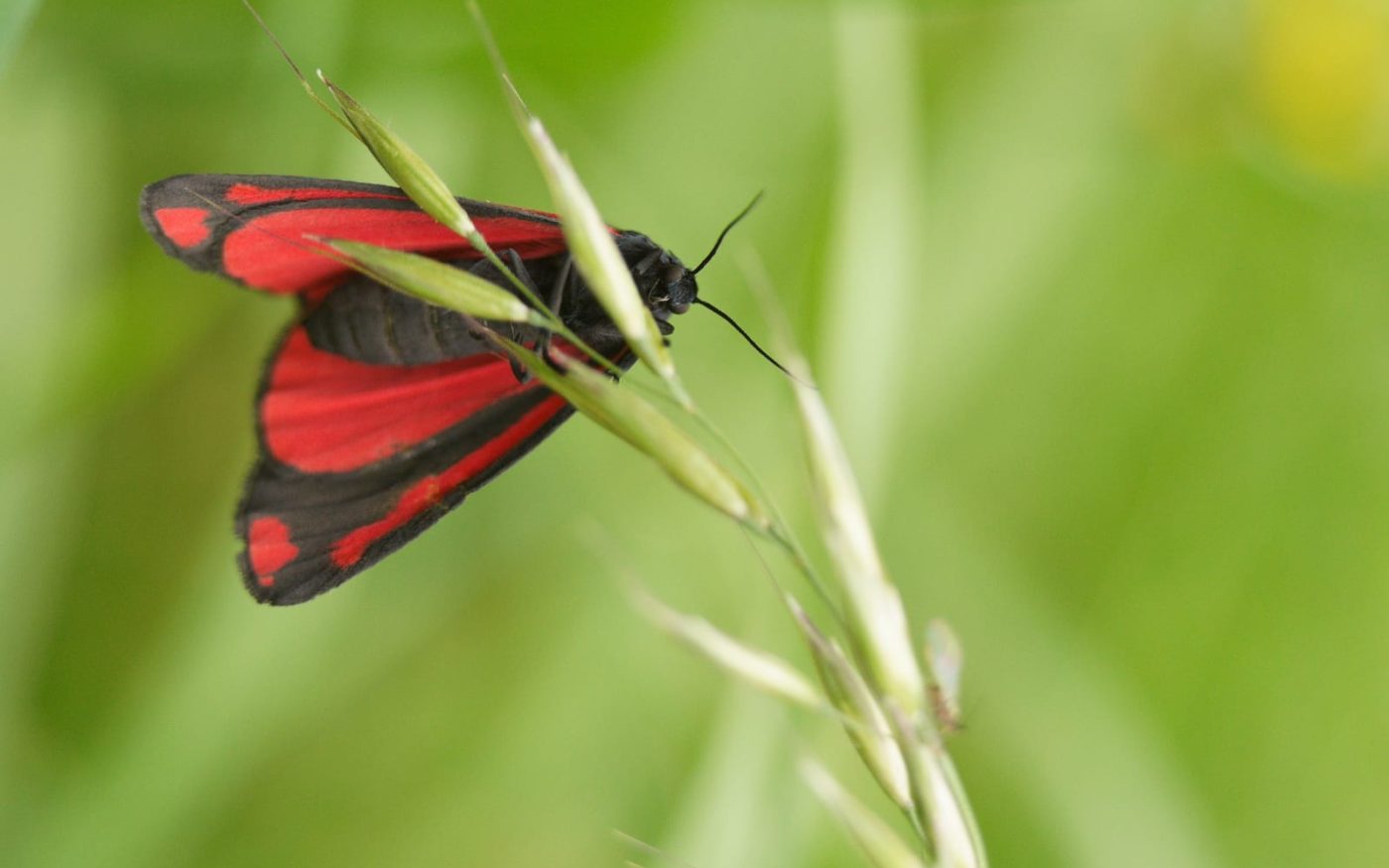Order
Butterflies and moths
Family
Erebidae
This day flying moth belongs to the subfamily Arctiinae, which contains roughly 11,000 species around the world. The Erebidae family includes tiger moths, lichen moths, wasp moths and the footmen moths. The cinnabar moth is the only species within the Tyria genus.
What do they look like?
Adult cinnabar moths have a body length of roughly 20mm and a wingspan between 32mm – 42mm. They have black bodies, and black forewings that have a red stripe running down the edge, with two red dots at the end. Underneath are red hindwings that are bordered black. These markings are normally consistent, although there have been variations where red markings are replaced by yellow, or the wings are entirely black or red with a black border.
The caterpillars of this species are also rather bold in colour, with black and yellow bands across the length of the body. These caterpillars are commonly found on ragwort (Senecio jacobaea).
Where do they live?
Cinnabar moths are normally found in well drained, open grassy habitats such as gardens, meadows, parks, mature sand-dunes, and heathland. The caterpillars can be found in similar habitats, feeding on ragwort plants.
Where can they be found?
They can be found all over Britain, apart from northern Scotland.
When can you see them?
Adult Cinnabar moths can be seen flying around from May to July. The caterpillars can be seen from July to early September.
Life cycle
After mating, female cinnabar moths can lay up to 300 eggs, normally laying eggs in batches of 30 or 60 on the underside of ragwort leaves. Young caterpillars then hatch and start to feed on the ragwort around them. As they feed, toxins from the ragwort leaves get stored in the caterpillar’s body. The toxins remain there after they pupate into an adult, helping to protect them against predators. Caterpillars overwinter in cocoons under the ground, then emerge as adults around May.
What do they do?
The cinnabar moth has been a successful biological control agent to manage the spread of the invasive tansy ragwort plant (Senecio jacobaea). They have been used in the western United States, New Zealand, and Australia. In the UK, they play an important role helping to control the spread of this plant. However, other methods to do this, such as the use of pesticides, are posing a risk to the cinnabar moth, and have significantly decreased its numbers.
Did you know?
The cinnabar moth is named after the bright red mineral ‘cinnabar’ which was once used by artists as a red colouring.

